Title : Occurrence of Panulirus Ornatus, Panulirus Versicolor and Panulirus longipes longipes (Palinuridae) Pueruli in the waters of Surigao del sur, Philippines
Abstract:
Puerulus naturally settles in Surigao del Sur's water during the early months of the year. Its arrival was caused by an ocean current that carried them from Papua New Guinea to the Southern Philippines, where they settled as puerulus. Many fishermen rely on puerulus collection as a source of income, while many marine live dealers profit financially from it. During the season, catch monitoring was conducted at five sampling stations: Tandag City, Marihatag, Surigao del Sur, San Agustin, Surigao del Sur, Lianga, Surigao del Sur, and Bislig City. The fish landing survey form was used to monitor the puerulus catch during the puerulus occurrence period at the aforementioned sampling stations. The results revealed three species: Panulirus ornatus, Panulirus versicolor, and Panuirus longipes longipes. P. ornatus had the greatest mean catch (84.85%), followed by P. versicolor (10.22%) and P. longipes longipes (4.92%). P. orantus predominated at all sampling sites, with the highest relative abundance in Tandag City, Bislig City, and Lianga, Surigao del Sur, at 99.68%, 99.46%, and 99.43%, respectively. Tandag City had a high mean catch (45.20 pieces/fisher/day), followed by San Agustin, Surigao del Sur (30.36 pieces/fisher/day), Marihatag, Surigao del Sur (8.83 pieces/fisher/day), Bislig City (9.43 pieces/fisher/day), and Lianga, Surigao del Sur (3.66 pieces/fisher/day). CPUE values began at 0.92 pueruli/hour in February, increased to 1.60 pueruli/hour in March, and reached 3.27 pueruli/hour in April; however, there was an abrupt increase between April and May, between 3.27 and 8.91 pueruli/hour, followed by an abrupt decrease between May and June, from 8.91 to 0.85 pueruli/hour. Pueruli occur once a year, with higher fishing activity one week before and after the new moon phase. Since this study focused on the puerulus resource in Surigao del Sur, Local Government Units must implement appropriate management strategies to ensure the province's fishing resource sustainability.
Keywords: Puerulus, natural settlement, seasonality of catch, catch per unit effort, catch composition



